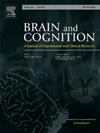时间辨别任务中预期性脑活动的识别。
IF 1.4
3区 心理学
Q3 NEUROSCIENCES
引用次数: 0
摘要
本研究的目的是研究时间认知中的预期功能,确定在时间辨别任务之前大脑主动加工的存在。为此,采用了两个判别反应任务(DRT):特征反应任务和时间反应任务(T-DRT)。F-DRT需要区分不同的几何形状,而T-DRT需要区分不同的刺激持续时间。具体来说,本研究通过脑电图方法和事件相关电位(ERP)分析,探讨了运动前皮层、前额叶皮层和感觉视觉区在时间加工前的准备活动中的作用。在完成两项drt的21名参与者中,分析了与运动(BP)、认知(pN)和感觉准备(vN)相关的ERP成分。结果支持所有被考虑的大脑区域参与时间认知,但通过表明这些区域可以在刺激传递之前的准备阶段参与,扩展了这一信息。此外,T-DRT需要PFC强烈的预期活动,这可能是即将到来的运动反应的调节因素。最后,视觉区域在T-DRT的感觉准备的早期阶段大量参与,可能是为了创造对即将发生的事件自上而下的低层次表征,以促进感知。本文章由计算机程序翻译,如有差异,请以英文原文为准。
Identification of anticipatory brain activity in a time discrimination task
The purpose of this study was to investigate anticipatory functions in temporal cognition, identifying the presence of proactive brain processing specifically preceding a time discrimination task. To this aim, two discriminative response tasks (DRTs) were employed: a feature DRT and a temporal (T-DRT). While the F-DRT required discrimination among different geometrical shapes, the T-DRT required discrimination among different stimulus durations. Specifically, this study investigated the role of premotor and prefrontal cortices, and sensory visual areas in preparatory activity preceding time-processing by electroencephalographic methods and analyzing the event-related potential (ERP). ERP components associated with motor (the BP), cognitive (the pN), and sensory readiness (the vN) were analyzed on 21 participants completing the two DRTs. The results support the involvement of all considered brain areas in temporal cognition but extend this information by indicating that these areas can be engaged during the preparation phase before the stimulus is delivered. Furthermore, the T-DRT requires strong anticipatory activity in the PFC likely serving as a moderator of upcoming motor responses. Finally, visual areas were greatly engaged in the early phase of sensory readiness of the T-DRT probably to create top-down low-level representations of imminent events to facilitate perception.
求助全文
通过发布文献求助,成功后即可免费获取论文全文。
去求助
来源期刊

Brain and Cognition
医学-神经科学
CiteScore
4.60
自引率
0.00%
发文量
46
审稿时长
6 months
期刊介绍:
Brain and Cognition is a forum for the integration of the neurosciences and cognitive sciences. B&C publishes peer-reviewed research articles, theoretical papers, case histories that address important theoretical issues, and historical articles into the interaction between cognitive function and brain processes. The focus is on rigorous studies of an empirical or theoretical nature and which make an original contribution to our knowledge about the involvement of the nervous system in cognition. Coverage includes, but is not limited to memory, learning, emotion, perception, movement, music or praxis in relationship to brain structure or function. Published articles will typically address issues relating some aspect of cognitive function to its neurological substrates with clear theoretical import, formulating new hypotheses or refuting previously established hypotheses. Clinical papers are welcome if they raise issues of theoretical importance or concern and shed light on the interaction between brain function and cognitive function. We welcome review articles that clearly contribute a new perspective or integration, beyond summarizing the literature in the field; authors of review articles should make explicit where the contribution lies. We also welcome proposals for special issues on aspects of the relation between cognition and the structure and function of the nervous system. Such proposals can be made directly to the Editor-in-Chief from individuals interested in being guest editors for such collections.
 求助内容:
求助内容: 应助结果提醒方式:
应助结果提醒方式:


